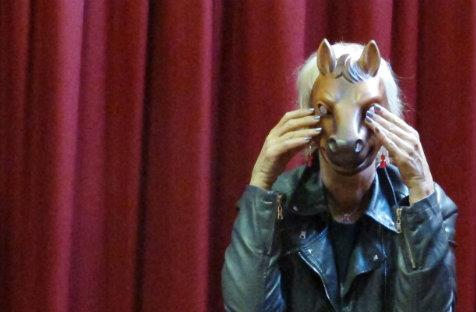Some performances come to you easily and you’re there in the moment with them, seeing the story clearly and experiencing the emotions. Other performances are more difficult; it’s not until hours, or days afterwards, that you realise what you’ve seen.
Catalogue of Dreams is one of the later performances. It required discussion, thought, and a good night’s sleep before it all came together and made sense for me.
Commissioned for the Canberra Centenary, Catalogue of Dreams delves into the complexities of children and out-of-home care (mostly foster care). It uses a variety of techniques to explore this idea – action, imagery, music, dance and some extremely powerful audio.
The piece with the young boy talking about his situation, particularly his relationship with his mother, was very powerful and heart-wrenching. No young child should have to have developed such maturity about relationships. He sounded more the parent than his mother was.
For me, that piece of audio held the key to my understanding of the performance. It’s one of those productions where there’s no one take home message, which suits the dynamics of the material. I imagine if you asked everyone present on the night I attended, they would all have come up with a different angle on it.
The performances by the cast were excellent. There’s many times where there’s no dialogue, no real action or drama, and these are the most challenging times to stay in character, but they all did.
The cast use their own names in the performance and this was a little confusing when two of them had the same name – for a while I wondered if they were different representations of the same person, until it became clear it was just a device.
I was particularly impressed by the presence onstage of Casey Keed. She was compelling, and my eye continued to be drawn to her.
The staging was very interesting. The work is performed in the round, with the audience sitting on what are obviously office chairs. Lighting is used to highlight various sections. I worried that it would be too confusing to know where to look, particularly as the cast are already in place, performing a variety of actions, as the audience enters. But the story itself is told through individual actions and so you know exactly where to focus.
Very cleverly, because this set up doesn’t enable scene changes to be hidden or removed from the audience, the stage manager was used as part of the performance, and so it all happened seamlessly.
The only real drawback in the end for me was that the relationships of the characters to each other, within the family dynamic, could have been better signposted. Were they a real family, or all foster children? Knowing this makes a tremendous impact on understanding the piece.
Otherwise this is an interesting, thought-provoking piece that, for me, caused a shift in my understanding of the life-long impact of being a foster child and how important the support of a constant, caring family is.
3 ½ stars out of 5
Catalogue of Dreams
Presented By Urban Theatre Projects & the Centenary of Canberra
Co-directed by Rosie Dennis and Alicia Talbot
Designed by Imogen Keen
Performed by Casey Keed, Jeremy Broom, Benjamin Slabb and Moya Simpson
Courtyard Studio, Canberra Theatre Centre
13 – 27 July





